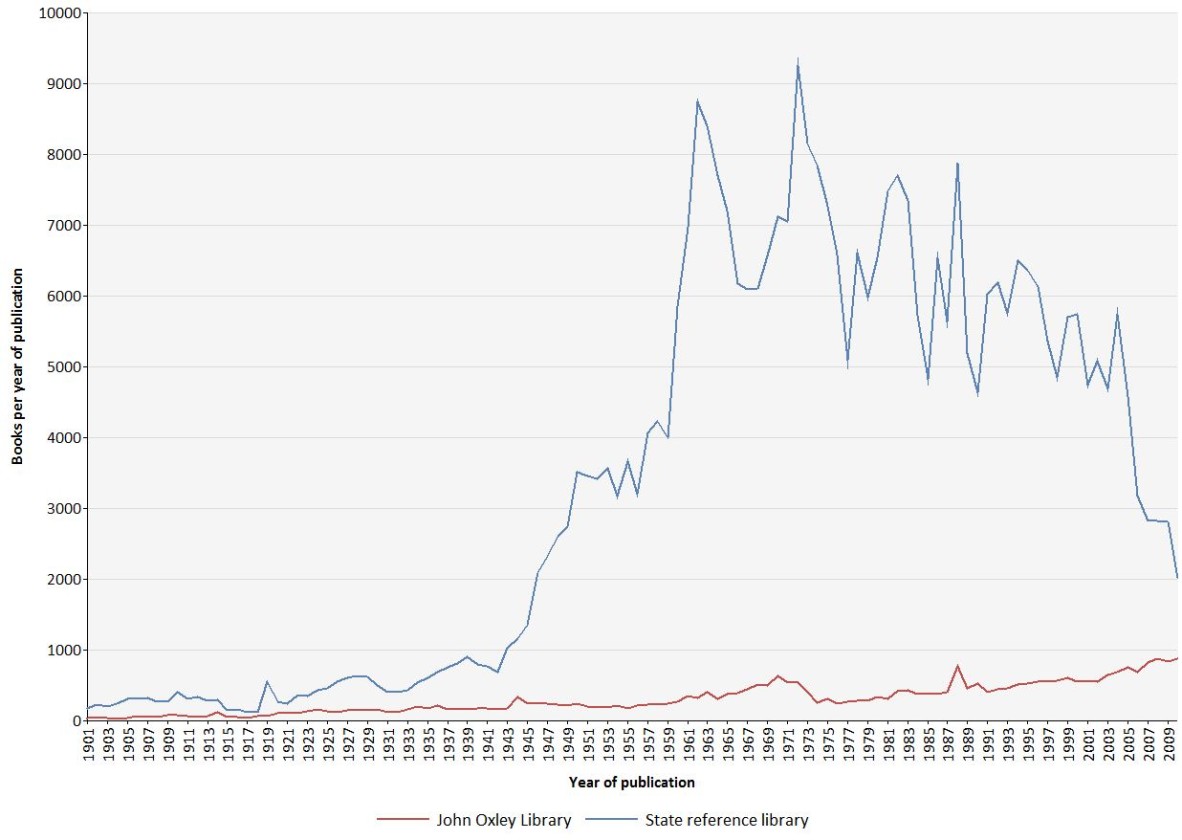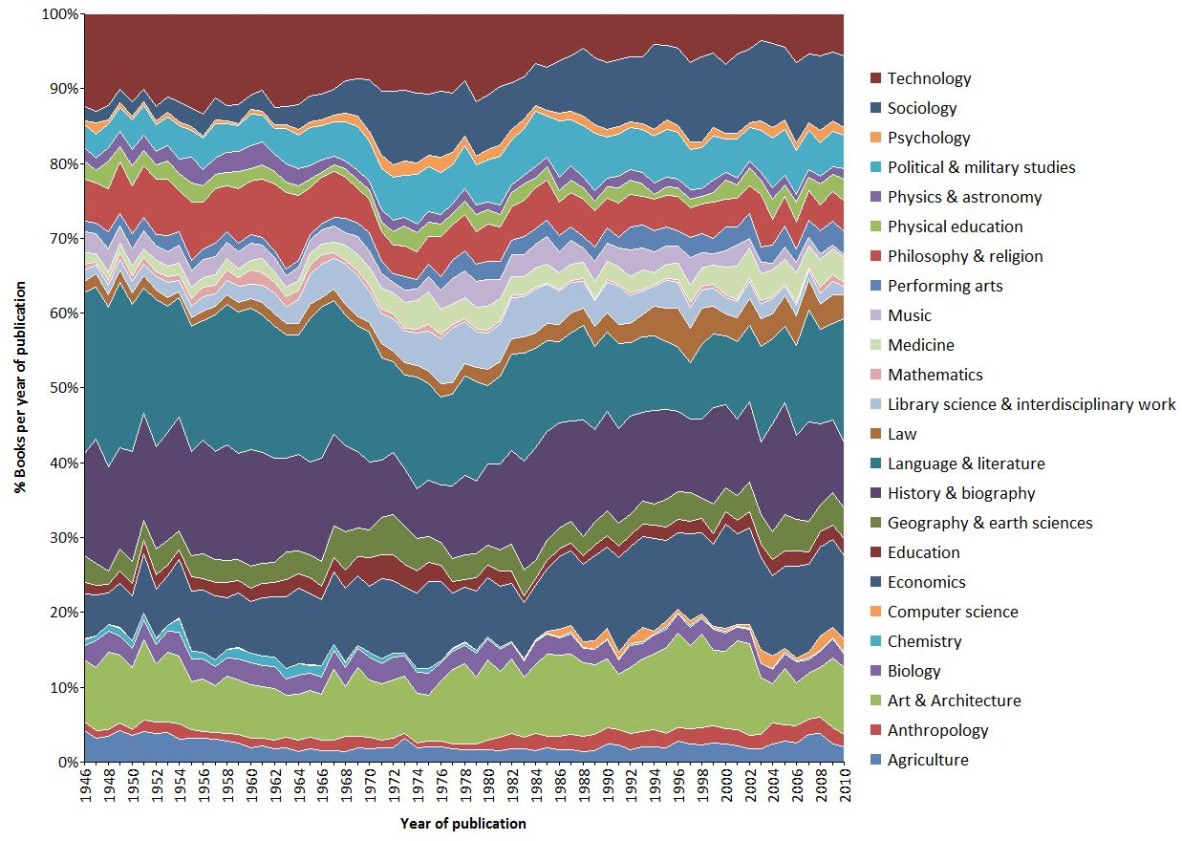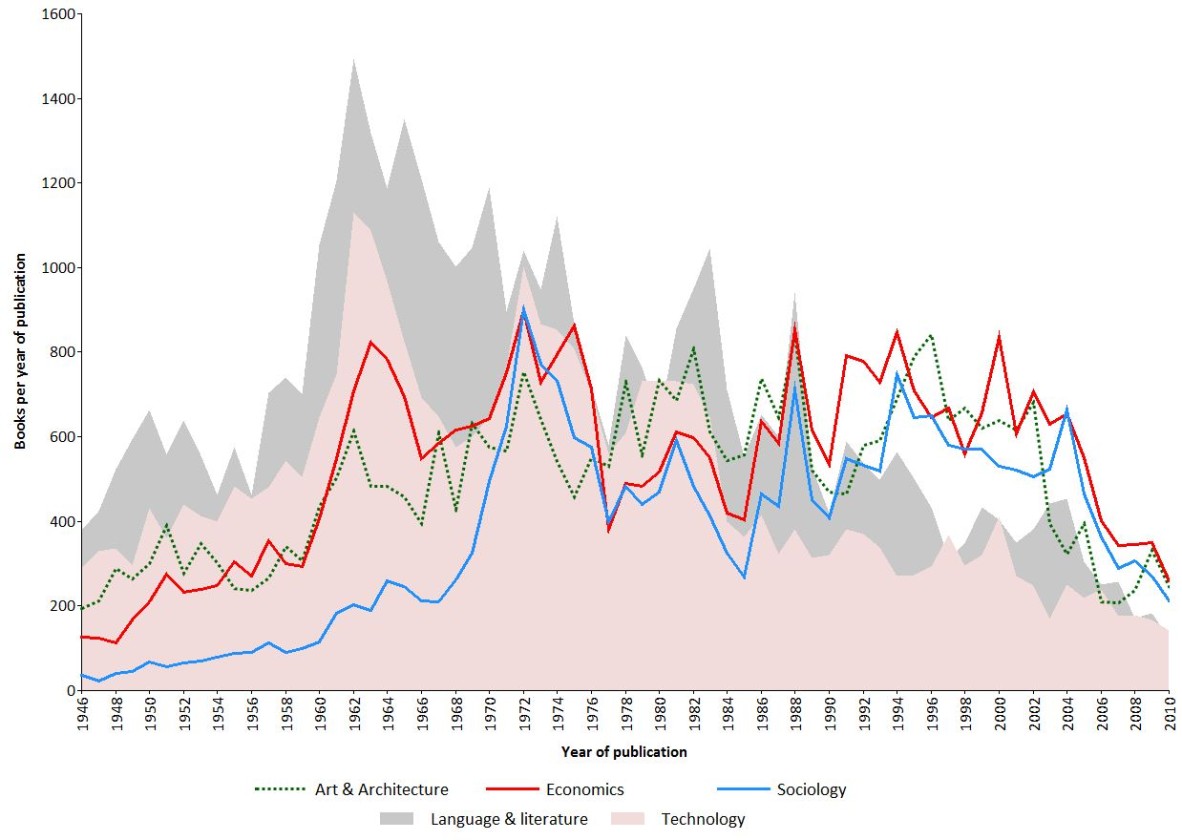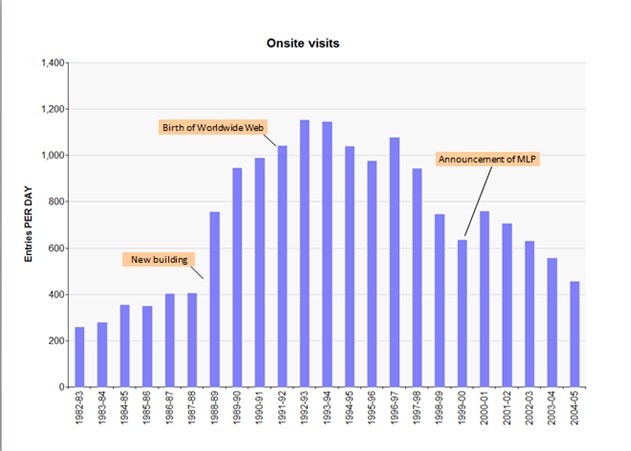In support of discussion and debate about how libraries are negotiating structural change and bringing the diversity of ideas and perspectives among our own staff to the table we are pleased to present a series of articles by librarian, Tim Mather. Tim interweaves careful articulation of a felt sense of libraries' promise with wide ranging analysis and discussion. In the interest of developing clearer insight into the issues, feedback is encouraged.
In this blog thread I will write monthly about libraries, innovation and structural change, but also about learning and growth and intellectual freedom; the ends that libraries exist to advance.
This is the first time I’ve written for a public audience. I have old fashioned views about publishing, which is just an observation, not an apology or a mark of defiance. I don’t have a facebook account and I’ve never posted comments on blogs or anything like that.
I’ve always found writing difficult. I have to correct myself a lot. At first I used scissors and sticky tape to save myself from having to start again. I’d cut out the good sentences and stick them together in order. It’s a failsafe method. There’s always something you can say. Readers are generally more forgiving than you’d think.
Sometimes writing isn’t safe and that’s a shame. Something’s wrong when writing isn’t safe – when it gets the writer into trouble, or someone else. Libraries are meant to be safe places, for writing and for people. That’s their point.
My first job here was shelving books. I became friends with one of the other shelvers who had won a prize for good marks in her first year at university. She was given a certificate and had to attend functions with the Dean and so on. Over the summer she felt proud and frightened. In the next semester she didn’t get past the first draft of the first essay and left shortly afterwards, spending the next few years living in a succession of small rooms. She told me she hadn’t known what she was meant to do … or she did know and then forgot over the course of a lonely summer, or forgot the moment the question arose. She said it was as if a spring had run dry. And yet, there we both were, some years later, shelving books in this library, amongst all the words, the assured, accomplished voices, enthralling each other with tales of scissors and sticky tape and small rooms; safe as houses.
My education only kicked off working as a shelver– in the seven, eight and nine hundreds – art, literature and history. I know that applying the term ‘education’ to libraries in this way is idiosyncratic. I suppose it depends on how you think about education. Anyway, I decided that libraries are noble places and became a librarian. I worked in various roles and ended up measuring and counting things and producing graphs. I discovered this was something I was quite good at, but it seems an odd predisposition to me. It’s just something I do, like whistling through my teeth.
Here is an updated version of one of my first graphs, produced for an audit of the State Library’s collections, conducted in 2002 (Figure 1). It shows the number of books in the State Library by year of publication, which roughly reflects acquisition rates, although there’s always some lag between when a book is published and when it’s acquired. Figure 1 relates to books only, excluding all the other sorts of material that can comprise a library. It also excludes collections of rare or special material.

Like its counterparts elsewhere in Australia, the State Library of Queensland incorporates two ‘libraries’ – one general in scope; supporting inquiry on just about anything, and the other specifically concerned with the state’s history – the John Oxley Library in Queensland’s case. These days we call them ‘collections’ rather than ‘libraries’ – the ‘John Oxley Library collection’ and the ‘Information collection’ until quite recently called the ‘State Reference Library’. But the fact is these ‘collections’ were originally quite discrete ‘libraries’.
The State Library of Queensland began life in 1896 as a general library - the Brisbane Public Library; renamed the Public Library of Queensland two years later. Sir Samuel Griffith, at the time Queensland’s Chief Justice and busy helping write Australia’s constitution, was the first chairperson of the board of trustees. In 1943 a statutory authority, the Library Board of Queensland, was created to administer the Public Library of Queensland and also improve library services throughout the state. The John Oxley Library had quite separate origins. Founded as the Oxley Memorial Library in 1924, it was joined with the Public Library of Queensland only on coming under the wing of the Library Board in 1946, three years after the Board’s creation. The Public Library of Queensland was renamed the State Library of Queensland in 1971.
In common with some other State Libraries, the State Library of Queensland also incorporates a third ‘library’, dedicated to supporting the needs of regional and remote communities. Out of a centrally maintained collection the State Library supplies the entire stock needs of library services in local government areas with small populations and all Queensland public libraries with titles on demand and special materials (books in languages other than English, for example). A service dedicated to supporting the needs of regional and remote communities has existed in some form since 1946, when the Library Board established the Country Extension Service. Whereas with the other two collections acquisitions are mostly permanently retained, the content of this collection turns over regularly and is therefore not represented here.
Historically, then, the State Library of Queensland coalesced around three separate ‘libraries’ which arose to address quite distinct needs and objectives. This may turn the normal formulation on its head but history is important precisely because the past is another country; a sovereign country with inviolate borders, a country which simply can’t be colonised - reduced to the precursor of an inevitable present - much as we’d sometimes like to. Of course, like everything else, the past can be misrepresented, but there’s a difference between something and its representation, however ineffable and impossible to resolve that difference may be.
What do we make of that foreign country? What were the people who lived there doing; what were they trying to do? What for them was the reason for things? Are we still trying to do the same things, only in different ways? What has been carried forward and what has been left behind? Are we seeing that distant country clearly? When we look back we look through a one way mirror. We can see them, but they can’t see us. We’re on our own.
A decade ago, when I produced the original version of this graph, it was mostly assumed that book acquisition rates reflected the average library’s fortunes. Of course that only follows if acquiring books is an unchanging internal priority, which, a decade ago, it was mostly assumed had always been the case and would go on being so. Thus in a commentary on this data, which I wrote in 2002, I linked book acquisition rates to a wider history – expansion and contraction of overall government expenditure; libraries and the sort of objectives they address moving in and out of political favour; fluctuations in the purchasing power of the Australian dollar, the sky rocketing price of scientific and scholarly journals eating into book budgets and so on.
But the truth is there’s never been a time when external factors alone entirely account for changing book acquisition rates i.e. book acquisition has always had to occasionally give way to other internal priorities. However up until a decade ago such incursions were never very great or sustained. The decline in book acquisition rates over the last decade clearly represents a deeper, more fundamental reordering of priorities.
For the State Library of Queensland, many new priorities have emerged over the last decade - broadening and deepening collection of the state’s historical record, making historical material accessible online, establishing a network of Indigenous Knowledge Centres in remote Aboriginal and Torres Strait Islander communities, greatly expanding audience engagement activities and providing access to a diverse range of full text subscription databases to name just a few. However it is the rapid demise of old priorities rather than the rise of new ones that marks one era from another. Ten years ago very few people imagined that developing and providing access to a collection of printed books would cease to be a preeminent priority within such a short time span. That’s surely remarkable.
Figure 2 gives a breakdown of books published between 1945 and 2010 by broad subject category (based on the categories used in a widely used collection evaluation methodology, Conspectus) It would make a beautiful tapestry or carpet. It shows a combination of publishing trends and the evolving subject priorities of this particular library.

Figure 3 shows some of the major movements in the subject profile of the State reference library, particularly the eventual eclipse of Language and Literature (grey shading) and Technology (pink shading) by subjects like Economics (red line), Sociology (blue line) and Art and Architecture (dotted green line).

As with all data the interesting human story is often in the detail. In the 1960s the tsunami in publishing in the humanities and social sciences hit libraries. In the case of some subjects, Economics, for instance, State Library was quick to embrace this trend. But with other subjects, Sociology for instance, a more cautious approach was taken. Spurts in acquisitions were followed by pulling back on what in 1960s Brisbane must have seemed like a bit of a fad – all those books about society and being human and so on. Eventually, towards the end of the decade, all resistance was abandoned.
Drilling down into this data other interesting things are revealed. For example, the hiatus in Economics acquisitions between the late 1970s and mid 1980s turns out, on closer inspection, to be a changing of the guard from left wing to neoliberal perspectives. Then there’s the strange preponderance of books about the occult and witchcraft published in the 1970s and 1980s, which is harder to explain.
Whatever importance we continue to lend it, this is what we inherit, this book collection, this weird and wonderful magic carpet, many millions in public money and the labour of many generations of dedicated librarians, carefully selecting, acquiring, describing, arranging, guiding. What of this magic carpet, do we take with us into the future and what do we leave behind?
Here is another graph (Figure 4) – daily entries to the State Library, based on the annual figures presented in the State Library’s Annual Report – from 1982 to 2005, just before the current building opened. What’s happened since is another story, which I’ll come to in a future post.

Figure 4 shows two things. Firstly it shows what a difference a new building makes to an institution like this one. Look at the way visitation shot up after the first new building opened in 1988. But on the other side of the curve what this graph shows is an institution feeling the first unfamiliar chill winds of structural change. A concept out of economics, ‘structural change’ is a fundamental change in the conditions in which an industry operates, forcing the industry to operate in a different way or to steadily become nonviable. Cuts to book acquisition rates over the last decade can be understood in this context – a library, like libraries everywhere struggling to adjust to new conditions.
The week after Easter was always the busiest time. Half the books would be off the shelves; people sat down in the aisles between the shelves for want of seats; mainly students, confronting the semester’s first wave of assessment, on top of the usual diverse crowd pursuing diverse purposes; noisy and colourful like a medieval square. One year- I think it was 1998, or 1999 - this stopped happening. It was as if a spring had run dry.
The structural changes that libraries are still grappling with emanate from the information and communications technology revolution. My career sits astride this structural change. I like to think this makes me more valuable, having experienced life both before and after the revolution. There’s a wonderful quote by Talleyrand, which the Italian filmmaker Bertolucci used as an epigraph to his 1964 film Before the Revolution:
He who has not lived in the years before the revolution cannot know what the sweetness of living is.
This quote is often interpreted as conservative; backward looking. But it’s not at all. Look again. It’s not proposing that life was sweet before the revolution. It’s saying something else.
Talleyrand was an interesting fellow. He worked as a high level diplomat for the Ancien Régime, the French Revolution and Napoleon. According to the Wikipedia article about him many historians maintain he ended up betraying all three. Bertolucci’s revolution never quite happened, of course.
Comments
Your email address will not be published.
We welcome relevant, respectful comments.